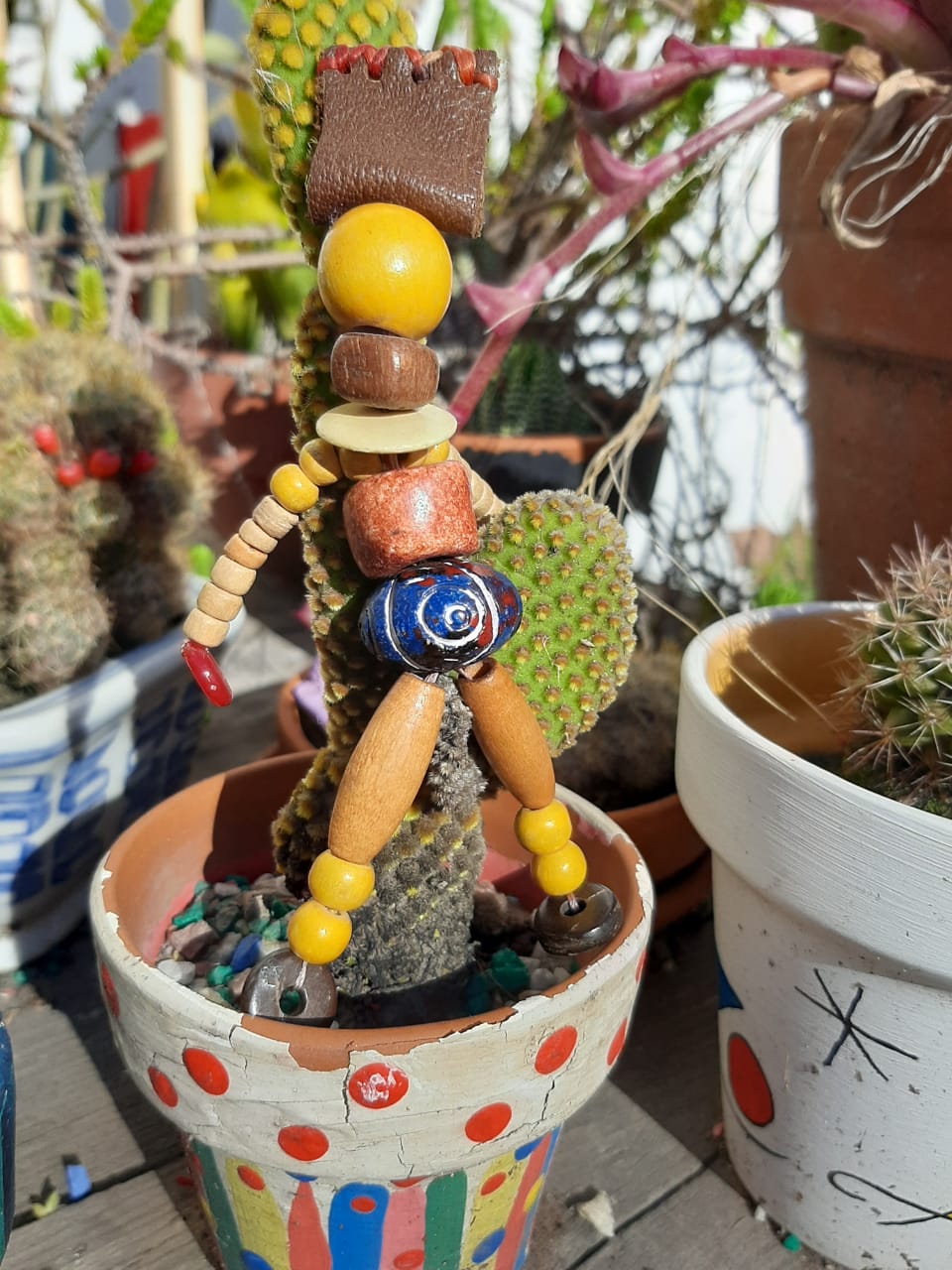Vasalisa

Photo: Ximena Tobi
One in a (sub-)series of posts contributed to SEMIOVOX’s Object Oriented series by applied-semiotics colleagues and friends from around the world.
When this doll came into my hands a decade ago, I had already read the Russian folk tale, “Vasalisa” — which tells the story of a girl whose mother dies, leaving a little amulet doll that will take care of her and guide her when she is in need. I never imagined that I might have my own until Pao, my artisan friend, showed me a series of amulet dolls that she had made using the beads from a pile of necklaces. She called the dolls “Vasalisas.”
Pao was dedicated to giving objects a second life, by recombining materials and pieces of different garments. Leather from coats was attached to velvet from cushions and brocade from curtains and then converted into a backpack, for example. The objects that Pao manufactured had a plus: they kept the experience, the trajectory, the secrets of the previous lives of each of the objects to which these materials belonged to before.
Captivated by Pao’s dolls, I didn’t know which one to choose. The combinations of colored beads emulating pants, skirts, blouses, shoes and hats were all so cute. I wanted to have them all, but something told me that the protection power of an amulet lies in the fact that the object to which we decide to assign such capacity is one — and only one. The one I chose has a blue stone, which I imagine as a short and bulky skirt, and a flat bead on the neck like a scarf, which together with the hat, gives my Vasalisa doll an air of sophistication and elegance. Since then, I’ve carried it with me everywhere, always peeking out from the inner pocket of my bag.
In the story, the girl touches her doll in order to receive messages, for example, the best path through a forest. When I touch or look at my doll, though, instead of a feeling of protection I get one of connection. I feel certain that we human beings are connected to other human and non-human beings, living and non-living, even through invisible networks of exchange, solidarity and communication.
My Vasalisa has come to represent that conviction, which is something that I put into practice every time I get rid of objects or clothes by giving them to friends or strangers. These objects have more lives to live.
Semioticians’ stories: Josh Glenn on MONKEY WHIMSEY | Malcolm Evans on QUEEN MARY FOB |Lucia Laurent-Neva (England) on TEAL BLUE VOYAGER | Rachel Lawes (England) on DEVIL GREEN | Charles Leech (Canada) on STORMTROOPER WHITE | Ramona Lyons on RABBIT BOX | Matthew De Abaitua on HATCHET | Chris Arning on INKSTONE BROOM | Hamsini Shivakumar on SOUL MOTHER SAREES | Lucia Laurent-Neva on SPONGEBOB BUS | Samuel Grange on SALT & PEPPER HOLDER | Ximena Tobi on VASALISA | Luca Marchetti on TEAPOT | Charles Leech on ORNAMENT | Brian McIntyre on BONE & FLINT NECKLACE | Gabriela Pedranti on MAFALDA DOLL | Sarah Johnson on JOAN OF ARC FIGURINE | Vijay Parthasarathy on BINGO | Aiyana Gunjan on WEDDING DUCKS | Serdar Paktin on NEY | Paulina Goch-Kenawy on VASE | Daria Arkhipova on POKER CHIP | Iván Islas on THERMOS | Sónia Marques on CABBAGE TUREEN | Thierry Mortier on BICYCLE BELL | Louise Jolly on CHALICES | Wei Fen Lee on CURRY PUFF POT | Mariane Cara on MINI WINDSOCK | Malex Salamanques Amiel on MARIA LIONZA | Seema Khanwalkar on THANJAVUR DOLL | Maria Papanthymou on KITCHEN WHISK | Martha Arango on ST. ANTHONY OF PADUA | Max Matus on WOODEN ROBOT | Rasika Batra on PRAYER BEADS | Anastasia Kārkliņa on CHESTNUTS | Maciej Biedziński on HAUNTED SPOON | Shirsha Ganguly on TINTIN FIGURINE | Clio Meurer on GLOW-IN-THE-DARK ROSARY | Enya Autumn Trenholm-Jensen on PINKY RING.
Also see these series: COVID CODES | SEMIO OBJECTS | MAKING SENSE | COLOR CODEX

